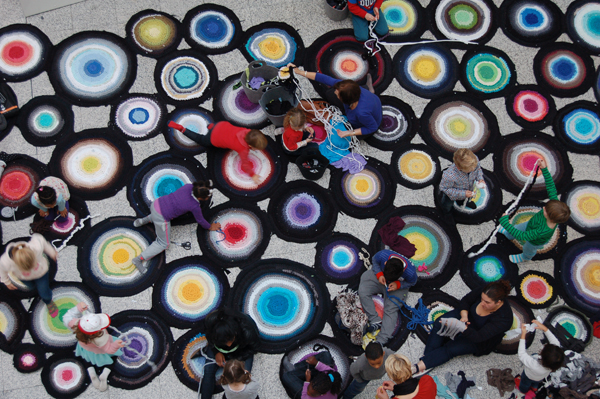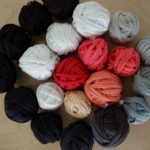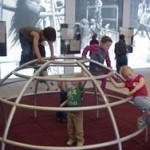We have just enough funding to get Galaxy started! So exiting! So I need to think about…
Temporary community.
This is Galaxy on a busy day, seen from above. I love this view of a very temporary community, circumferenced by the design I made and busy learning skills I discovered. How good can it get?
Have been working on a way to present this tempcom idea. Did a small video on my phone – which was nice but has technical problems – then brought my videocamera. I do hate video editing, so it will have to be done in one long shot – a moving painting is the basic idea. Did some promising footage today but really need another camera. As a stand-in I experimented with serial photography: took one picture per second, pics like the above. Now I must find the software to do stop-motion. Will start on that when I’m quite recovered from the massive effort that went into making Galaxy and building its tempcom.
Quote from my essay about art&play&games:
Proposing a game is a strategy that questions the authorship and nature of a work of art. It also has a radical effect on the relation between artist and public.
Traditionally, artists propel their work into the public domain by a process of linear re-territorialisation so well described in Daniel Buren’s ‘The Function of the Studio’, 1979. The work of art moves from the studio to the gallery to the museum or the collector’s home, abandoning the environment in which it came to be for a place in the institutional framework. Moving thus, the work is circumscribed, is given safe and secure limits; one could say that it is tamed and placed into an easy-to-recognize category.
Under these circumstances, linearity is almost inescapably given. Drawn as a diagram (A=artist, W=work, P=public), the process can be mapped as follows:
A —> W — > P
A performance has a different provenance. It may be conceived in the studio, but it takes place in a (semi)public place, and is inscribed into art history by documentation. Texts, pictures, video’s and suchlike make the event accessible for those people that were not there at the time.
The diagram of the performance, still rather linear, could look like this (R=representation):
| < — P |
|A+W < — P | —> R — > P
| < — P |
Many contemporary artists break with linearity in favour of a more complex connection between them, their work and the public: interactive art.
Interactive art is defined by Mulder (2) as : “art that becomes such only once the viewer changes something about it”. Mulder makes clear that with the advent of the interactive artwork – which is not necessarily computer-based, as Mulder points out by choosing The Inside is the Outside by Lygia Clark (1963) and Untitled (Portrait of Ross in LA) by Felix Gonzales-Torres (1991) as his first examples – linearity has gone out of the window:
| P |
| + |
A — >| P + W + P |
| + |
| P |
Something else again occurs when the artist performs the work together with his public, or in this case: his participants. Rirkrit Tiravanija’s work is a case in point. Using a gallery as a temporary kitchen in which he cooks and chats with visitors, showing a representation of his New York apartment where visitors are invited to drop by for tea and a chat, his work does not fall into an easy category or conventional process.
| P |
| + |
A — >| P + (A+W) + P | — > R — > P
| + |
| P |
Artists like Tiravanija abdicate from the romantic notion of the artist-as-a-solitary-genius in favour of a participatory model, aiming to create a complex flux between individuals and groups. While Tiravanija adopts such mundane activities as cooking, eating or sleeping, other artists concentrate on another type of social pattern: the game. Ricardo Basbaum could be our example here.
Basbaum sets up a ‘Me+You’ game, an invitation to play that is to be activated by the acceptance of the public of their role as an active agent. Members of the public become the main players of the scenario proposed, playing by the rules or subverting them, adopting ethical and aesthetic and creative positions of their own. The game investigates their experience and their decision-making process, not that of the artist. The game itself exists only as a visual device, an invitation, in the sense that it does not strive to occupy territory in its own right. It acts as a backdrop, a landscape in which players realise the work through their actions and gestures.
| A |
| + |
| P + W + P | — > R — > P
| + |
| A |
Proposing a game is a strategy that critiques the notion of the artist as a ‘solitary genius’. For it is no longer the artist that creates the image or has the technical skills that make possible the realization of the idea. Nor is it a given that the result of the activity is art because of the fact that it is activity done by an artist or in an artist’s studio (an idea so eloquently explored by Bruce Nauman in Mapping the Studio, 1967). When adopting games as an artistic strategy, the answers become much more uncertain and flexible. Proposing a game is a strategy that makes for a – quite conscious – lack of control: the work will hold surprises for everyone, including the artist.
“I do not try to avoid or hide the artists’ (proposer) role; but try to make it exist as part of a group dynamics. This is why I cannot be outside: I have to take part in the process and negotiate my role as part of the group dynamics, each time. And, of course, we all negotiate our presence in relation to each other, as group participants.”(3)
| « Glow In The Dark | <-- previous post | next post --> | Resolve » |
|---|









